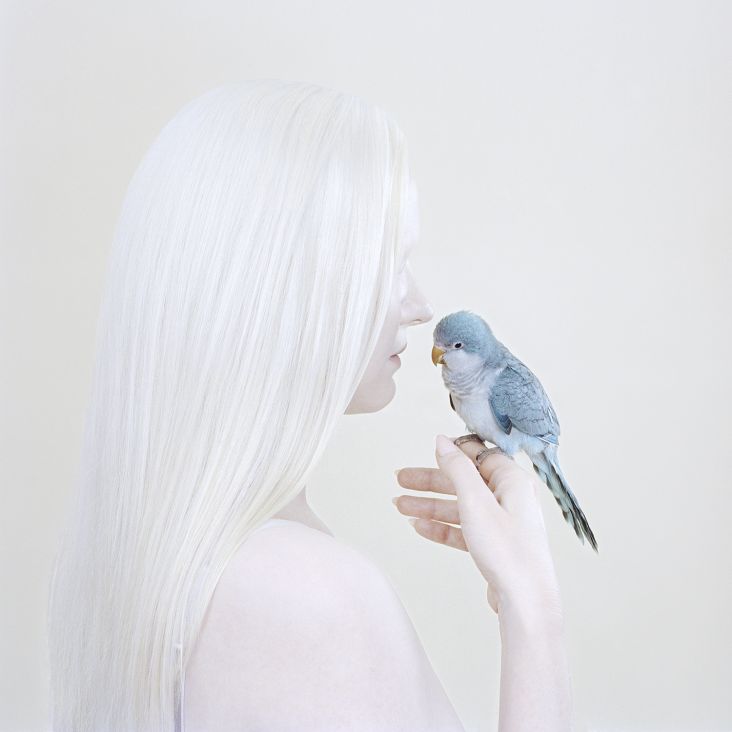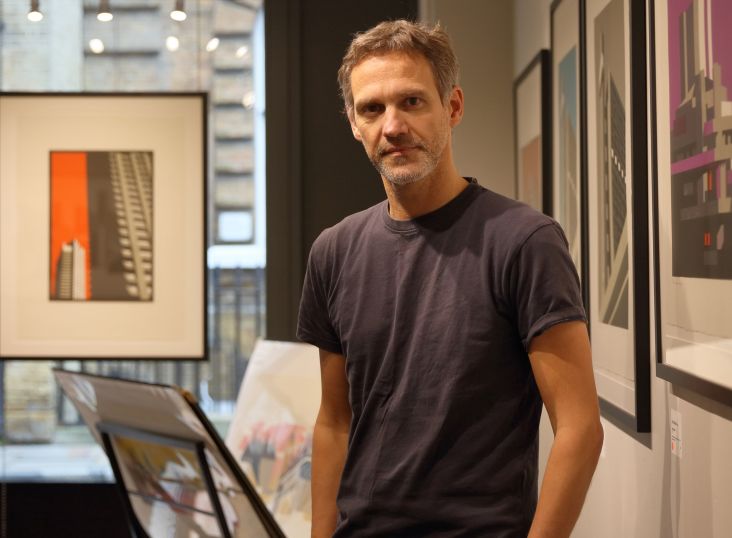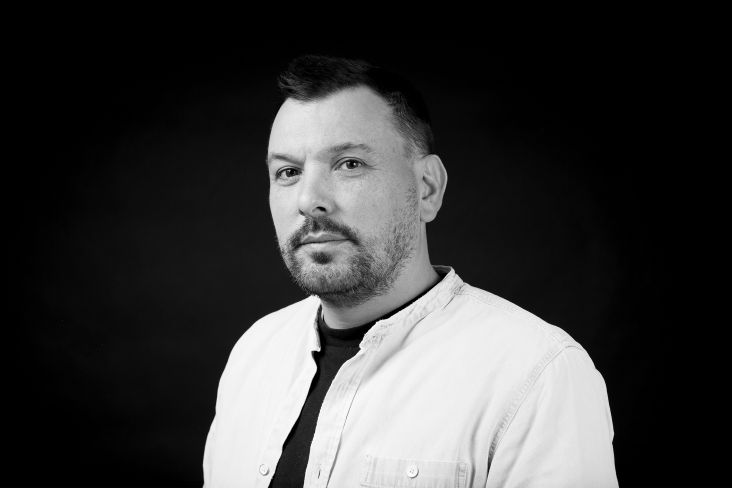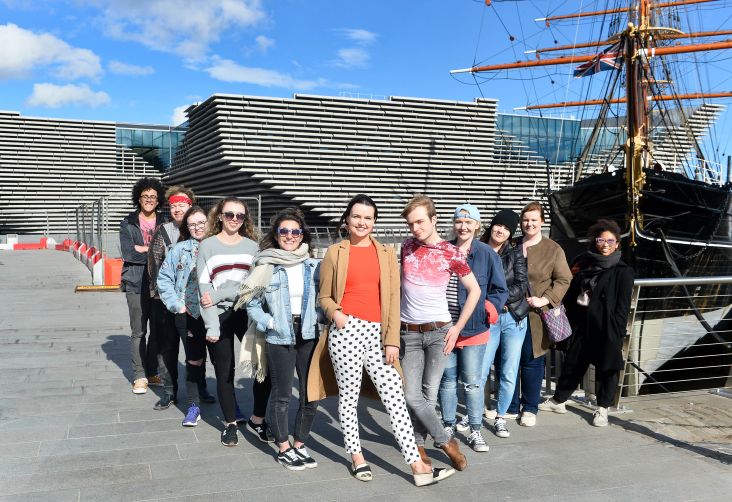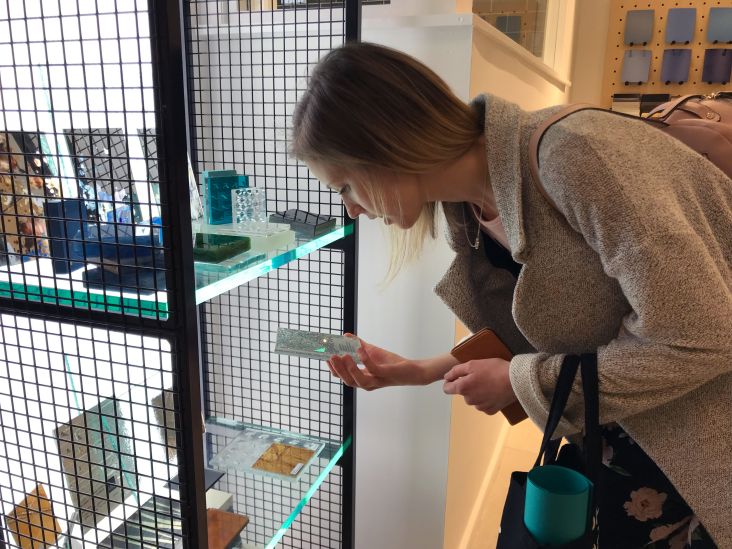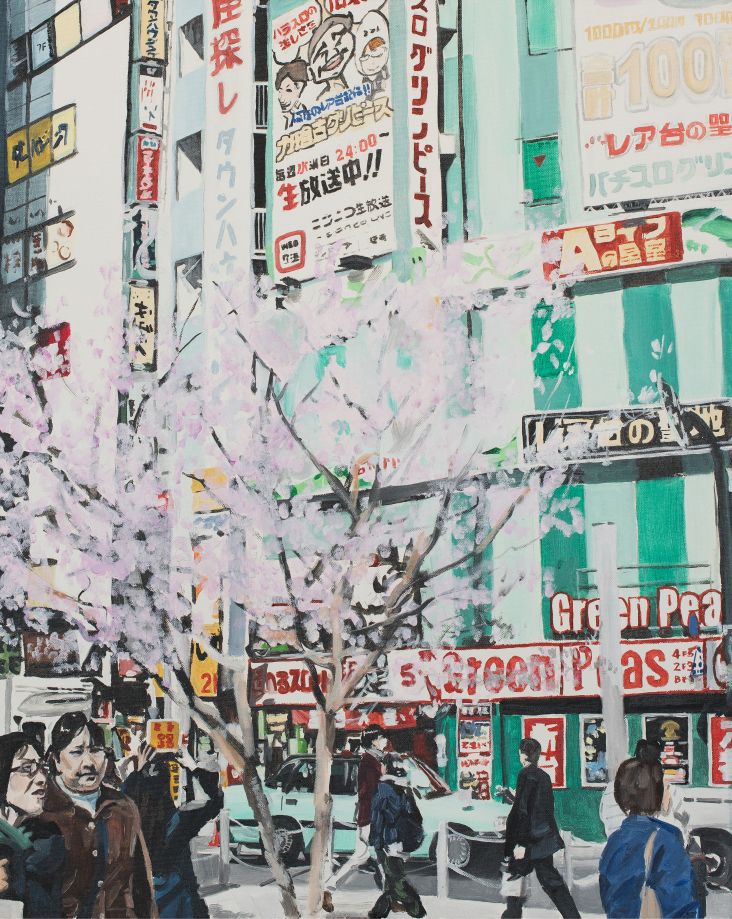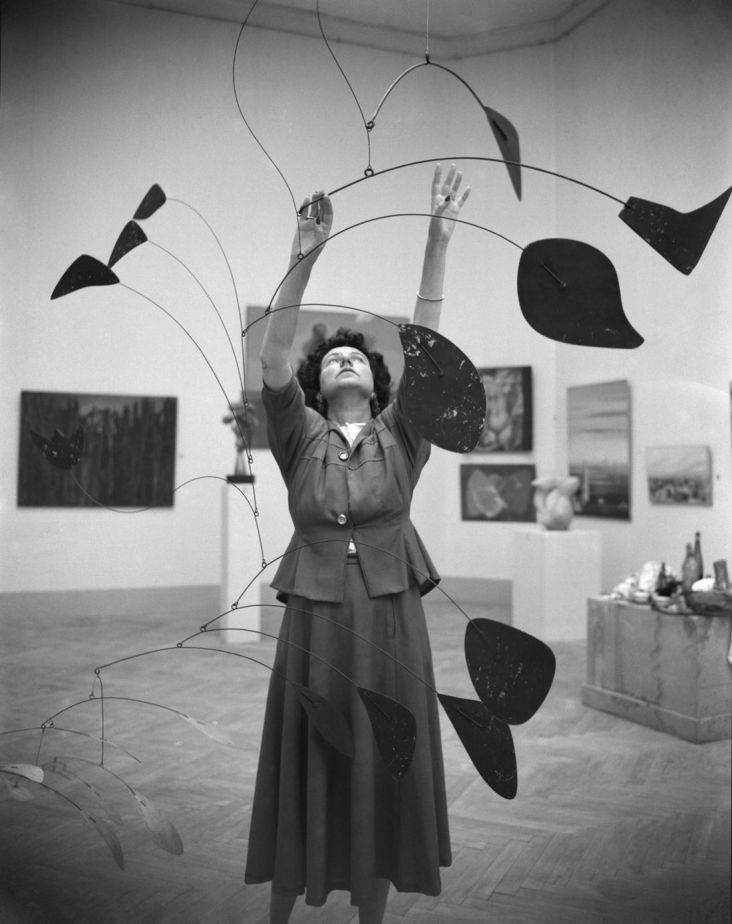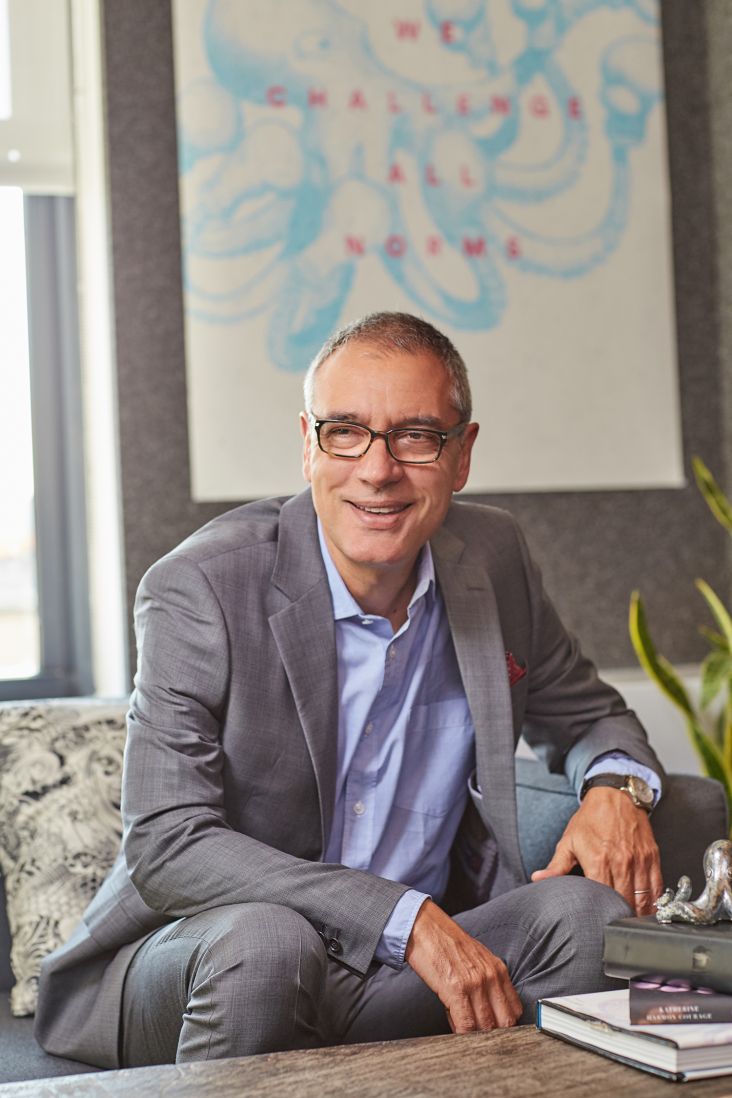Andrew Joyce on doodles and life in Japan, the beauty of side projects and how to succeed at freelancing
Born in the UK, Andrew Joyce is an illustrator who currently lives in Japan where he enjoys drawing, making zines, creating GIF animations and exhibiting his work.
](https://www.creativeboom.com/upload/articles/c3/c38fc5408ca98ff97817ce90bc5e2e79eede8d43_1280.jpg)
Image credit: Alex Abian
Work that we first came across and loved on Instagram, which includes detailed, yet friendly maps, buildings, hand-drawn lettering and observational illustration.
A lot of Andrew's work is influenced by his surroundings, Tokyo, and has attracted the attention of clients as big as YouTube, TimeOut, The Times, National Geographic and Conran.
He's also co-founder of The Tokyoiter, a Japanese tribute to The New Yorker and imaginary magazine that invites artists, illustrators and "drawing freaks" who live in Tokyo to come up with new covers, taking inspiration from the world's largest and most vibrant city. But this is just one of his many side projects.
We chatted to Andrew to find out more about why he decided to move to the Land of the Rising Sun, how he finds the time to "doodle" when he isn't "working" and the secrets behind his success.
You're based in Toyko. How did you come to live in Japan?
I’d been visiting Japan every year since 2004, either for work, travel or to study, and finally decided to move here permanently in 2012. My wife is Japanese so we have family over here and I already knew that there was a great creative scene in Tokyo. It was an easy decision to make at the time.
What's the creative scene like there?
It’s great! Very friendly and active. There are always meet-ups happening (like ‘PauseDraw’ or ‘Tokyo illustrators meet-up’) and events or exhibitions being organised.
There are also a lot of shared spaces popping up for freelancers and small businesses so it’s becoming a very easy place to meet new people and get involved in the local scene.
Has it been easy to adapt and settle?
Yeah, it was very easy to get used to Tokyo life because I’d visited so many times over the years. Visas, housing and banking accounts can be a little tricky to get set up at first but certainly not impossible! I think if you’ve been to Tokyo before and loved it then chances are you’d love living here. It’s hectic sometimes but an incredibly livable city!
Your work is often influenced by your surroundings. What tends to catch your eye that you think you must draw?
Recently I’m interested in shapes, how they can be simplified down and fit together to make an image (whether it’s a plant, building or person etc.) so when I’m exploring different parts of Tokyo and I see something that could be fun to draw, I’ll usually sketch it down or take a photo which I’ll then draw later.
You have a wonderful and distinctive style. How would you describe it? How did it come about?
I think it’s always changing (which can be a good thing or a bad thing) but I’ve always liked bold lines and strong colours. A style isn’t something I really planned but constant drawing and playing around with colours, angles and line weight helped me find what and how I liked to draw. It’s a constantly evolving process and probably something that will never stop changing.
Who and what are your influences?
I have no specific artists or illustrators, past or present, that I think of as inspiring my work directly but, for good or bad, I constantly look at other styles, whether it’s in books, cafes, exhibitions or online. I’m a fan of illustration and love seeing what people are creating.
If I see work that I like, or if someone has used colour in a new and interesting way, then I find that gives me the inspiration to go off and create something new myself.
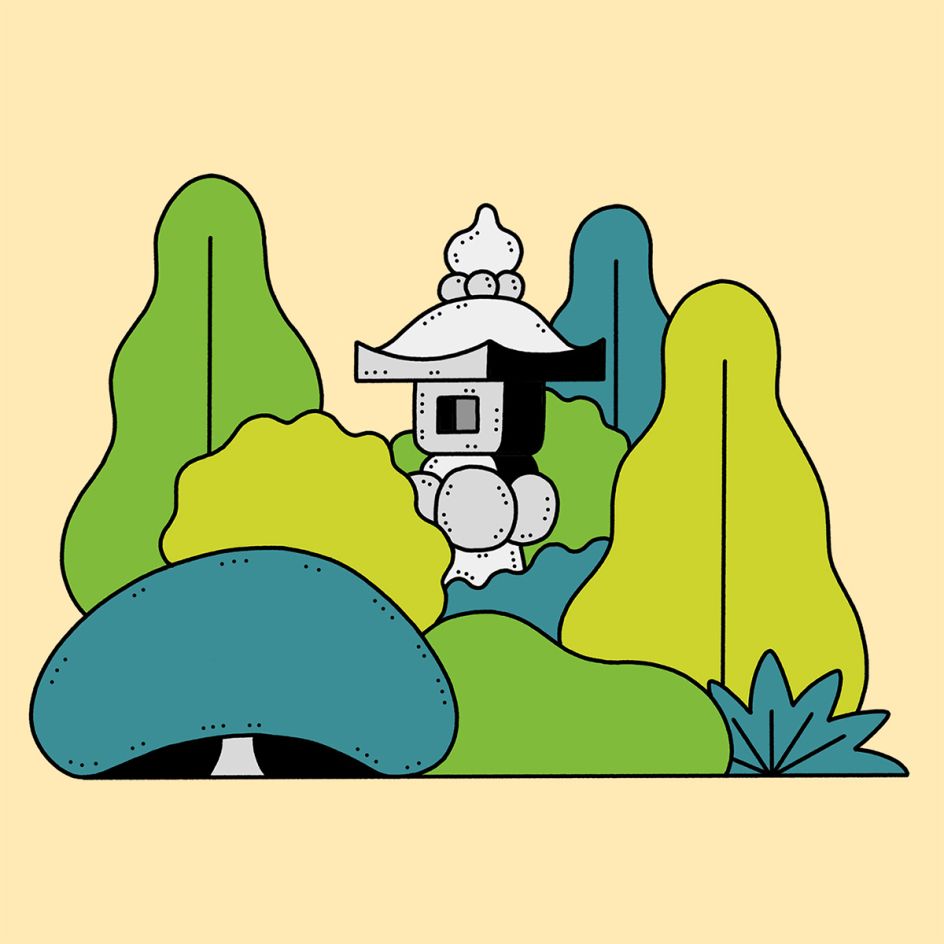
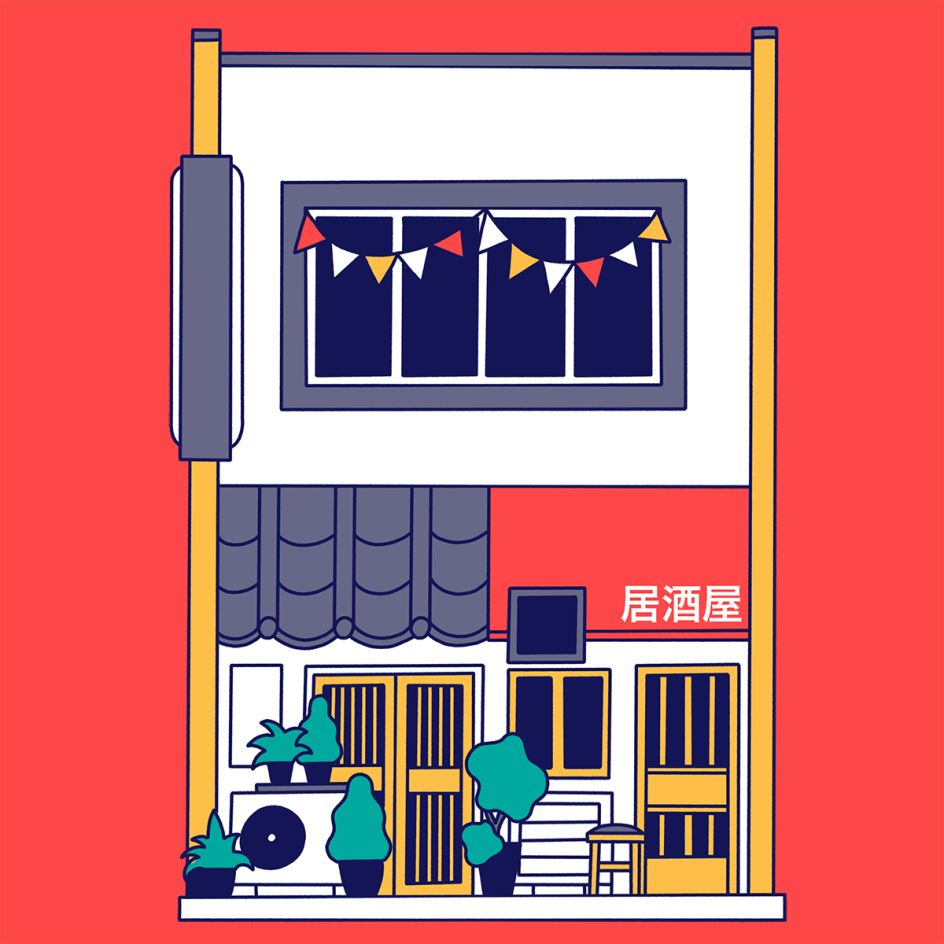
You're also co-founder of The Tokyoiter. How did this come about?
The Tokyoiter is a project that was founded in 2016 alongside, Tokyo-based, French illustrator and art director, David Roberts. We ask illustrators and animators, that either live in Tokyo or have visited in the past, to create a cover image for a fictional Magazine called ‘The Tokyoiter’.
As big fans of The New Yorker and the way their covers often depict various aspects of New York life we thought that Tokyo deserved a version of its own!
At first, we just asked our closest illustrator friends to create covers but slowly, through exhibitions and exposure online, we’ve managed to keep a regular flow of new covers coming in and uploaded onto our website – thetokyoiter.com.
Both Myself and David discovered that we were both fascinated by how others documented Tokyo in their work. Everyone has their own favourite area or restaurant and there are so many talented artists in Tokyo that we decided we wanted to create a way to see and meet all these people.
We currently have over 40 covers and are always looking to collaborate with new illustrators looking to make a cover.
You also run Japanese Words Illustrated – tell us more
Japanese Words Illustrated is a little side project I run on Instagram as a way for me to remember the random Japanese I learn every day. It’s also used as a way to keep practising my interest in hand-drawn lettering.
The project doesn’t always get the regular attention it needs but it is something I enjoy doing and will continue to update when I can.
If you’re learning Japanese, or are thinking of learning, then please take a look! I find that if it's more visually appealing to look at then the greater the chance I’ll have of remembering the vocab!
Would you say side projects are important? How have they helped you?
I think they’re incredibly important. They are an integral part in order to grow as an illustrator, to help focus on what subject matter you like to draw and as a way to keep the fun in being a full-time drawer.
Working with clients is, on the whole, a very positive experience. Something that helps refine your process and become more professional, yet it is also a collaborative experience. Changes need to be made based on feedback and the final result can sometimes be a little different to what you originally had in mind.
Working on something just for you helps to keep it fun and exciting and can encourage more experimentation, which in turn can help you find new interests or techniques.
As illustrators, we’re very lucky to be able to keep our job always based on our interests and things that keep us motivated. If you end up just working on the same kind of projects, based on clients asking you to draw something similar to something already in your portfolio, then you’ll quickly become bored or burnt out.
Starting a side project is a great way to work on something that is close to your heart, inspires you and makes you excited to create again. That excitement will usually end in a result that also grabs new clients' attention as well.
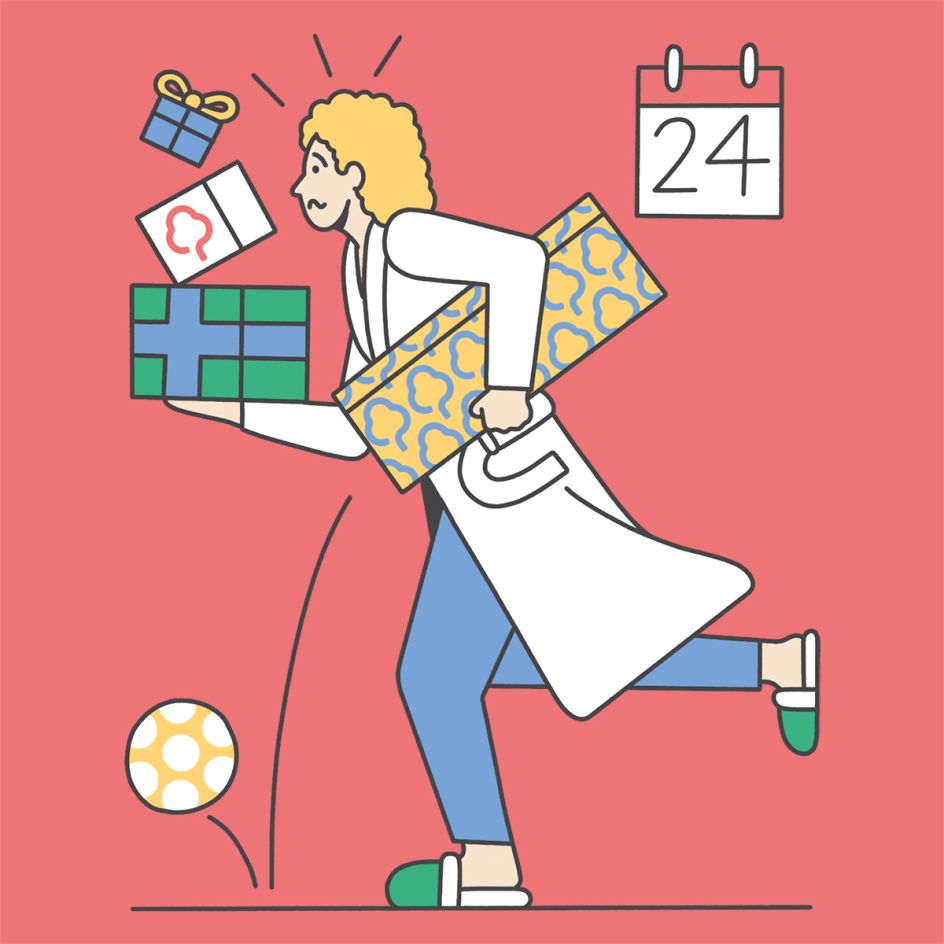
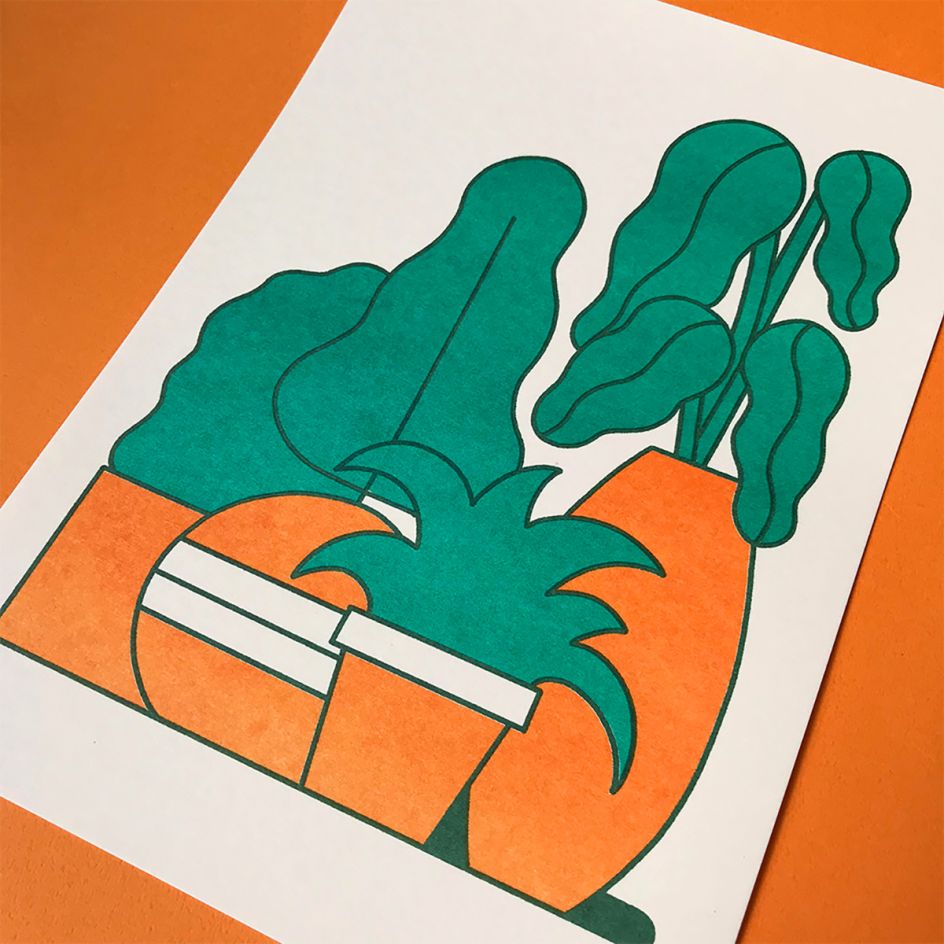
You've worked for clients such as Uniqlo, PlayStation and Virgin Media. How do you attract new business?
I’m lucky to be a part of two great agencies, Handsome Frank in the UK and A-GENT in Japan. They help promote my work to clients that I wouldn’t normally have access to.
I also get work via social media (even though I have a pretty small following, it still brings in work). Things like Instagram are a great way of presenting a body of work in one place whilst also showing people that you are active and constantly making art.
Apart from that, I think that time helps. Just having a presence online, constantly showing your portfolios, going to events and showing your face, etc. Eventually, clients will come across your work again and again and will hire you. Once the ball starts rolling it gets easier to find work.
Aside from being signed to Handsome Frank and A-GENT, what else helps to get your name out there?
Being a part of nice projects or group shows was a good way for me to get my work out there initially. They’re fun to do and a bit of a money saver when it comes to having exhibitions or getting exposure. I’d always recommend being on the lookout for cool little projects or events that you can contribute to, like The Tokyoiter!
After graduating, I personally sent a lot of emails. To agencies, studios, individual illustrators or art directors. I was never pushy or too forward, I would just politely ask if I could have the opportunity to show them my work or perhaps meet and get some advice. Most of the time they were more than happy to see me. That's how I became a part of Handsome Frank.
Do you have any dream projects in mind?
I’d love a project that would let me explore and draw all over Japan. Like an illustrated diary for the local tourist board or something. I should probably stop waiting around for someone to ask me and just do it myself.
If someone is planning a trip to Tokyo, where must they absolutely visit?
There are too many places to fit here so instead I’ll recommend people to check out this guide written by a friend of mine, designer and teacher, Ian Lynam. It’s a great list of all the places you need to see whilst in the city, as well as some hidden gems.
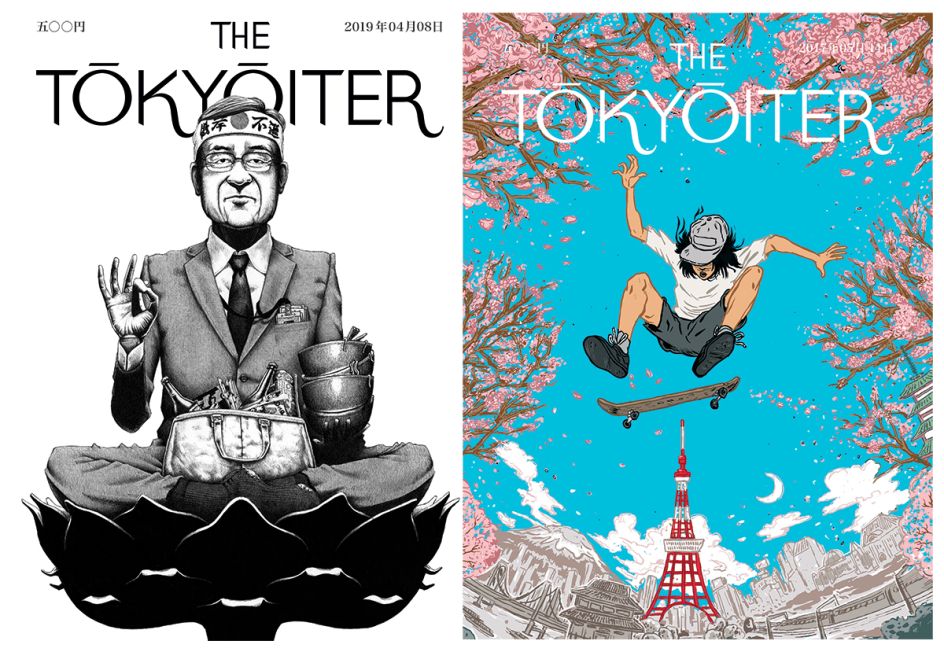
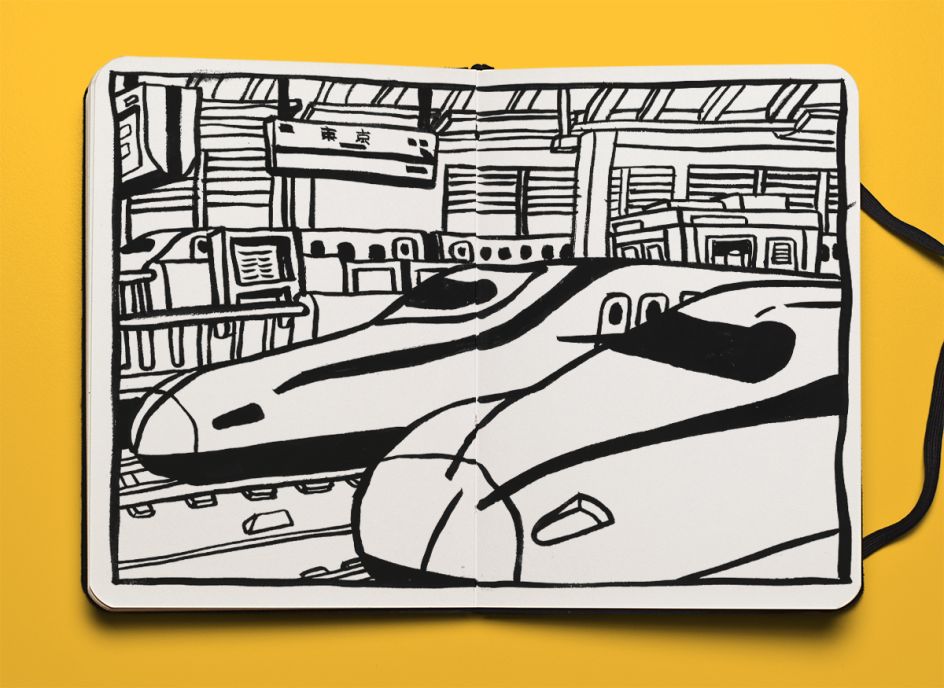
Have you a favourite project? What is it, and why is it so special?
I actually started a new side project late last year. The idea was for me to explore a new area of Tokyo and draw whatever stood out to me. It’s an excuse to see new places in the city, draw more of Tokyo and also create a little guide for people.
I’ve done one area so far, Naka-Meguro, but I’m looking forward to creating more in 2018. I’ll be uploading them to my Instagram when they’re ready and perhaps turning it into something bigger in future.
What has changed since you went freelance, for better and worse?
I went from doing a full-time job to becoming freelance so the biggest change for me was having more flexibility with my time. On the one hand, it’s great because you can choose how to best spend your time in order to meet a deadline. At the same time, when there is no one telling you to stop working, you often find yourself not stopping.
When I first thought about going freelance I would be worried about finding jobs and getting money to pay bills but now my biggest worry is always telling myself to stop working so that I can spend time with family and doing other interests.
If you weren't illustrating, what would you be doing?
Stuck behind a desk somewhere whilst doodling onto a piece of paper…
What advice would you give to those hoping to follow in your footsteps?
Keep going! So many budding illustrators give up when they realise the first few years are difficult but the ones that keep creating work and showing it to as many people as possible are the ones that usually turn it into a career.
Don’t fall back on the 9-5 job, give illustration everything you have because it’s worth it! When you have a job based on the thing you love the most, it’s no longer a job! And Mondays become your favourite day of the week!

















